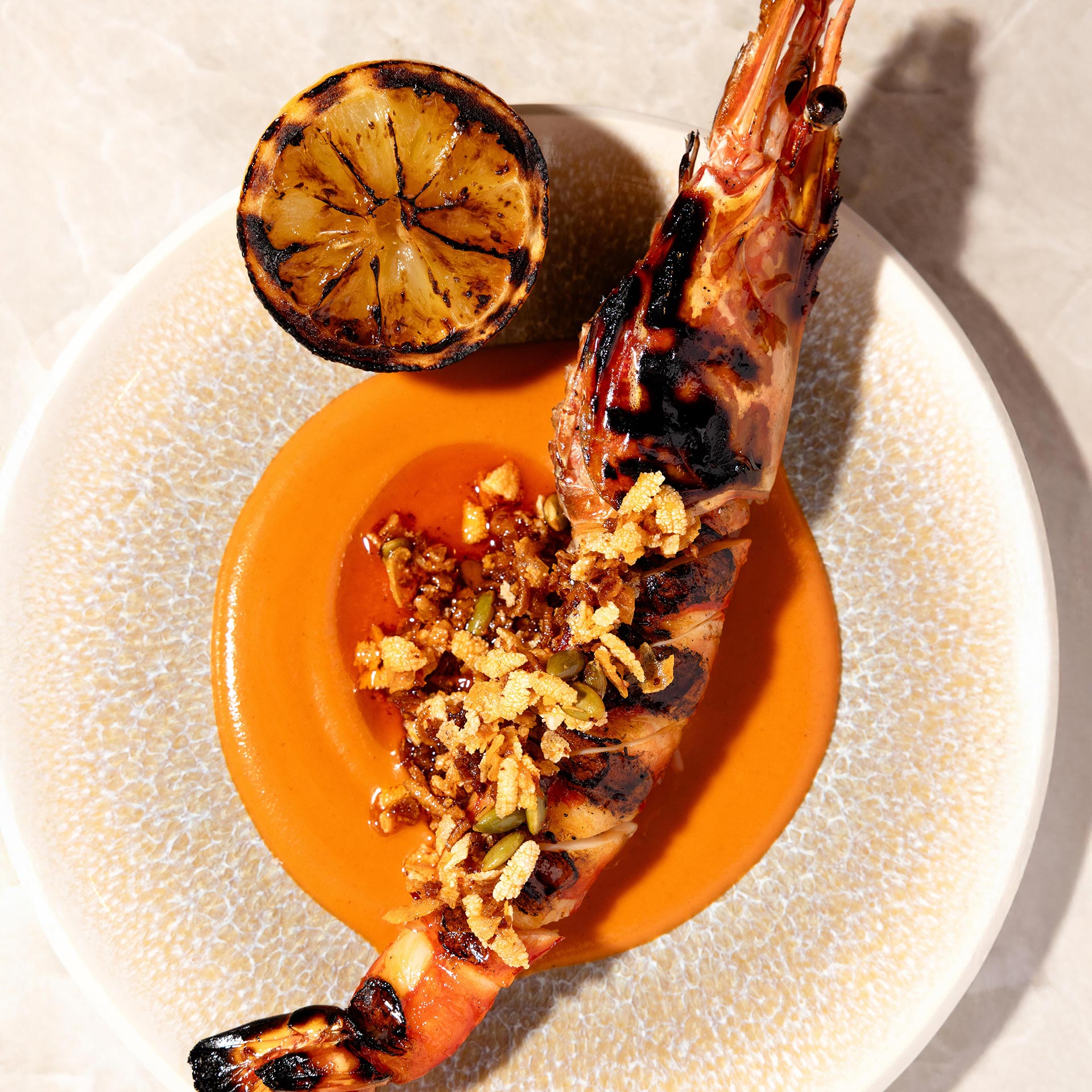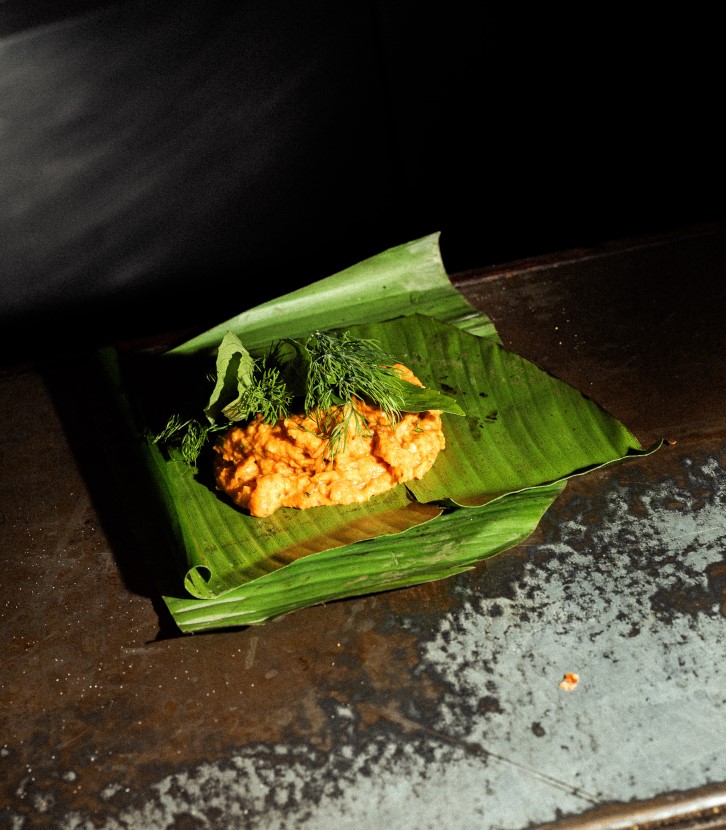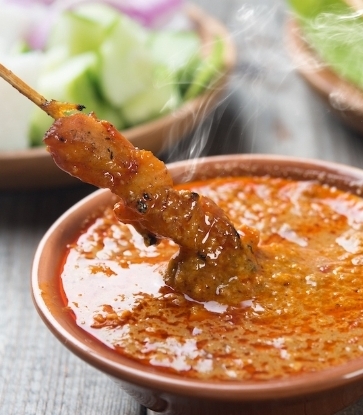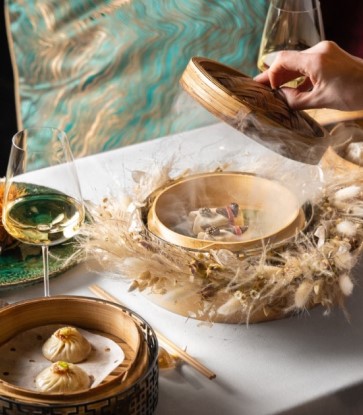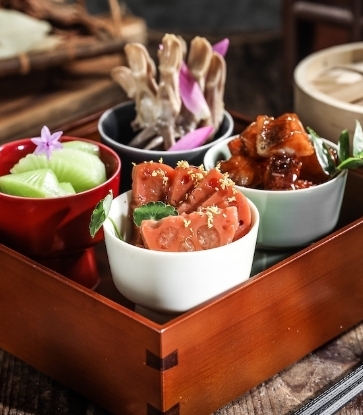Given how geographically vast and diverse China is, there is little wonder that the country is home to a wide range of regional cuisines. Though they share the same foundational cooking methods and many of the same basic ingredients, condiments, herbs, and spices — particularly ginger, scallions, garlic, soy sauce, and vinegar — the differences lie in how they combine them together, with which local products, and in what quantities, to create very distinctive regional characteristics and flavours.
While Cantonese cuisine is typified by a more refined and delicate style of cooking that showcases the freshness of the available ingredients through a light touch of seasoning and sauces, Sichuan cuisine revels in the fiery flavors of fresh and dried chilies and the uniquely numbing sensation caused by the famous Sichuan peppercorns. Though the provinces of Jiangsu and Zhejiang are close enough for many to lump their cuisines together as “Jiangzhe” cuisine, they each have their own signature characteristics. Chefs in Jiangsu typically use a heavier hand with garlic, scallion and ginger — with those in Suzhou showing a particular affinity for sweet and sour flavours — while chefs in Zhejiang aim for cleaner flavours.
We’ve selected five classic regional Chinese dishes that feature both the distinctive and the unifying characteristics of Chinese cuisines.

Steamed Shad Fish
Where to order it: Zhejiang Heen in Hong Kong
One MICHELIN Star, MICHELIN Guide Hong Kong Macau 2020
Every spring, schools of Reeves shad make an annual migration from the ocean, swimming upstream to spawn in the Yangtze River in Zhejiang province. Known as one of the “three delicacies of the Yangtze River” along with the saury and the puffer fish, the Reeves shad was so esteemed during the Ming Dynasty that it was regularly sent to the reigning emperor as tributary.
At Zhejiang Heen, head chef Pan Jiulong prepares steamed shad fish with the authentic flavours of Zhe cuisine, favouring light and mild seasonings to highlight the pure tastes of the fresh seafood. Shaoxing rice wine along with slices of fresh ginger and scallion help neutralise any potential “fishiness” while also enhancing the bright freshness of the Reeves shad. Thin slices of Jinhua ham add savoury umami to round out the flavours.
Most importantly, the Reeves shad is steamed with its scales left intact. This serves the dual purpose of providing a thin layer of protection for the tender flesh as well as preserving the unique layer of fat that resides directly underneath the scales. For many guests, the entire point of eating a Reeves shad prepared in such a manner is to enjoy sucking the fat and oil directly from the scales.
For this reason, it is essential to precisely calculate how long the fish should be steamed based on its size and weight. A long cooking time might result in the fat melting away, depriving guests of the best part.

Beggar’s Chicken
Where to order it: Pearl Dragon in Macau
One MICHELIN Star, MICHELIN Guide Hong Kong Macau 2020
Beggar’s chicken is a famous Chinese dish that dates back to the Qing dynasty. There are many different versions of the dish's origins, but most involve a beggar who, for lack of cooking utensils and equipment, wrapped a whole chicken in lotus leaves, packed it in mud, and then buried it in an underground cooking pit. The next day, he unearthed and cracked open a treasure of moist, tender, and fragrant meat.
While most experts place the origins of beggar’s chicken in Hangzhou, the classic dish has long since been introduced into many regional Chinese cuisines, which now claim their own long-standing traditions surrounding it.
Pearl Dragon’s executive chef Otto Wong presents an upscale, Cantonese-influenced version (listed on the menu as Steamed Chicken Stuffed with Eight Treasures and Wild Mushroom), which has been elevated from tradition through the use of premium ingredients and advanced cooking techniques.
Traditional recipes call for the whole chicken to be prepared with the bones left in and stuffed with sliced pork, mushrooms, and some preserved vegetables. Wong's iteration starts with special, 100-day, millet-fed chickens from Guangdong, and he takes the time and effort to first debone the chickens before stuffing them with the eight “treasures” of three types of seasonal Yunnan mushrooms (morels, maitake, and yellow mushrooms), South African abalone, South American sea cucumber, Japanese dried scallops, dried shrimp, and salty egg yolk.
For the last step, Wong again deviates from tradition by encasing the lotus-leaf-wrapped bird in bread dough instead of the requisite mud or clay. The dough insulates the chicken, slow-cooking the meat to tender perfection while preserving the juices and concentrating the aromas within. As an added bonus, the baked bread exterior can be enjoyed with a mushroom dipping sauce that Wong provides on the side.
“It’s a challenging yet interesting dish to make, because it is time-consuming and requires a lot of knife work to debone the chicken and also to prepare the stuffing,” says Wong. “Managing the baking temperature and time is also very crucial in order to ensure that the chicken and its stuffing will be well cooked without burning the bread.”

Lazi Ji (Spicy Deep-Fried Chicken)
Where to order it: Chilli Fagara in Hong Kong
MICHELIN Plate, MICHELIN Guide Hong Kong Macau 2020
“Lazi Ji is a Sichuan staple that is commonly found on every family dinner table where I’m from,” says Chilli Fagara’s head chef Chan Kai Ying, who was born in Chongqing, a municipality that shares the same culinary traditions as Sichuan, having only been officially separated from the province in 1997. In fact, the spicy deep-fried chicken dish is thought to have originated from just west of Chongqing in the township of Geleshan.
Pictured left: Chilli Fagara's Lazi ji (Photo: Chilli Fagara)
This spicy and numbing dish is tossed with plenty of Sichuan’s signature, bright red chillies and pairs perfectly with a bowl of steamed rice, according to Chan. The basic preparation typically involves marinating chicken thighs and cutting them into small pieces before deep-frying them to a golden brown and then tossing them with dried chillies and spices.
At Chilli Fagara, Chan first stir-fries the dried chillies and Sichuan peppercorn together with ginger, garlic, celery and Chinese leek to fully release their aroma before adding the fried chicken to the mix. They also purposefully cut the chicken into larger pieces for a more tender texture. “This also makes the chicken easier to spot, so everyone can simply dig in,” Chan laughs.
Starting with the best ingredients is essential for achieving authentic flavours. To that end, the Chilli Fagara team makes an annual pilgrimage to Sichuan to source fresh spices from trusted farmers. “You also need to have a good understanding of balancing the heat of the chilli peppers with the right amount of peppercorn for the desired numbing effect, all the while pairing those with the flavour that comes from adding other fragrant and fresh ingredients.”
Chan also makes little tweaks to the dish to better cater to the preferences of her Hong Kong clientele. The lazi ji at Chilli Fagara has a slightly milder spice profile than the original dish served in Chongqing and Sichuan. To make her dishes healthier, she only uses vegetable oil, and she has created similar versions of the dish using alternative sources of protein.
“Fresh seafood goes really well with the dried chillies, taking this simple classic to new heights and making for a delectable and unforgettable dish,” she says. “We also offer a mock chicken option made with soy for our vegetarian customers. It retains a similar texture and is both healthy and delicious.”

Mapo Tofu
Where to order it: Qi – Nine Dragons in Hong Kong, MICHELIN Plate, MICHELIN Guide Hong Kong Macau 2020
Sichuan food is most famous for the three heating sensations of ma (numbing heat from Sichuan peppercorns), la (spicy heat from chilies), and tang (scalding heat, temperature-wise) that characterize many of its dishes. But to focus solely on cuisine’s fiery heat would risk ignoring the rich aromatics and complex flavor profiles that make it one of the eight great cuisines of China.
The classic mapo tofu is a mouthwatering showpiece that brings together multiple layers of tastes, textures, and sensations. Featuring tender cubes of tofu and morsels of ground meat lightly braised in a spicy sauce, the dish consists of a seemingly simple and straightforward list of ingredients, including soft tofu, ground pork or beef, Sichuan peppercorns, fresh and dried red chilies, Doubanjiang (fermented broad bean and chili paste), douchi (fermented black beans), ginger, garlic, scallions, soy sauce, sesame oil, and a hint of sugar. But when the right ingredients are combined together the right way, the dish becomes at once salty, spicy and numbing, with hints of both sweetness and bitterness, rounded out by pungent aromatics and savoury umami.
At Qi – Nine Dragons, head chef Chan Wai Kin directly imports fresh and dried chilies, Sichuan peppercorns, and special sauces from Sichuan and adds them to his mapo tofu with an experienced hand, ensuring enough spice to heat the palate but not so much as to risk overpowering and disrupting the fine balance of flavors in the dish. A vegetarian option that uses only tofu and no minced meat is available.

Sweet and Sour Fish
Where to order it: Shanghai Yu Yuan in Hong Kong
MICHELIN Plate, MICHELIN Guide Hong Kong Macau 2020
As the words for “fish” and “abundance” share a similar pronunciation in Chinese dialects, fish has traditionally held a role of symbolic importance as the bearer of good luck and prosperity in all regional Chinese cuisines — whether it be during Chinese New Year, as part of a celebratory banquet, or for special family dinners.
In Jiangsu province, the banquet dish is often fashioned as a sweet and sour fish dish. In its most visually striking form, a whole Mandarin fish is expertly deboned while leaving the fillet attached to the tail and then sliced in a crosshatch pattern. When deep-fried, the fish meat fans out and its tail lifts up in such a way as to resemble a squirrel, inspiring its whimsical name of “squirrel-shaped Mandarin fish.”
Shanghai Yu Yuan serves its version with pine nuts in a sweet and sour sauce but with a contemporary presentation: the fish is cut into more manageable bite-size pieces, but its flavours and textures are by no means less impressive.
Through skillful management of huohou — the duration and intensity of the cooking temperature — the outside batter achieves a light crispiness while the fish within remains tender and moist. The sweet and sour sauce is carefully balanced to allow the acidity from the rice vinegar to add a lift to the sugary sweetness of the deep-fried seafood and to enhance the overall savoury flavour of the dish. Toasted pine nuts are sprinkled atop for extra crunch.






